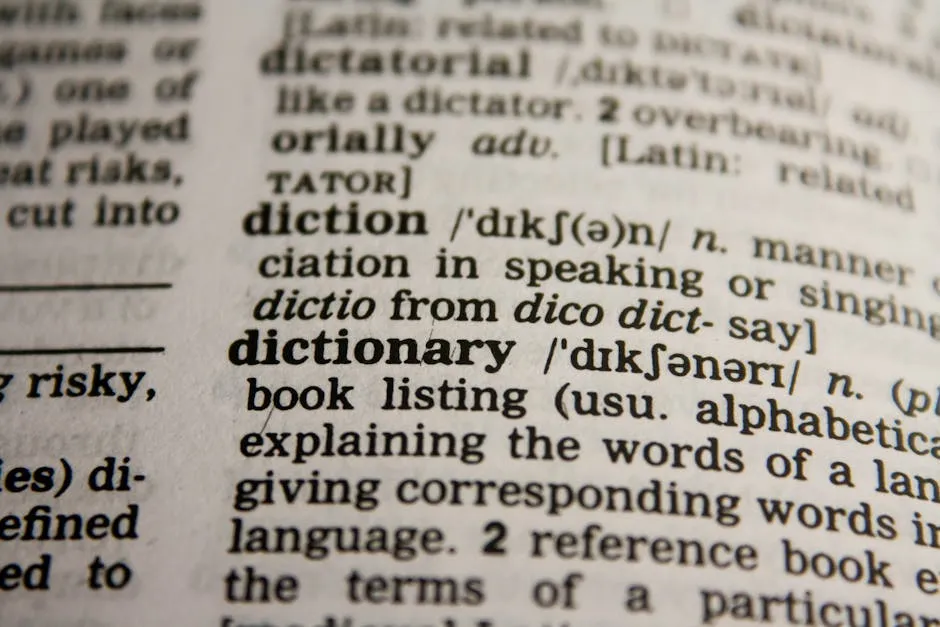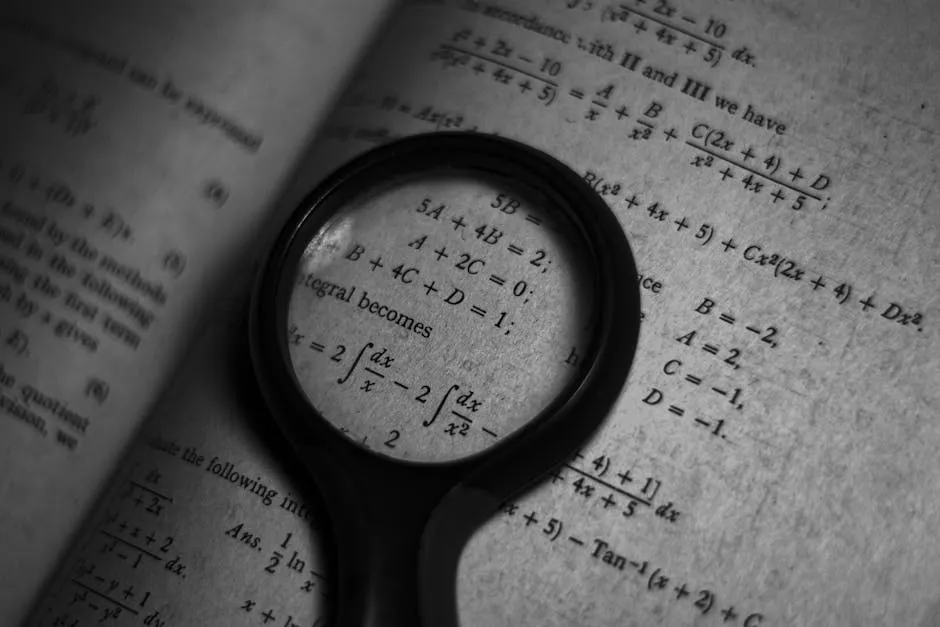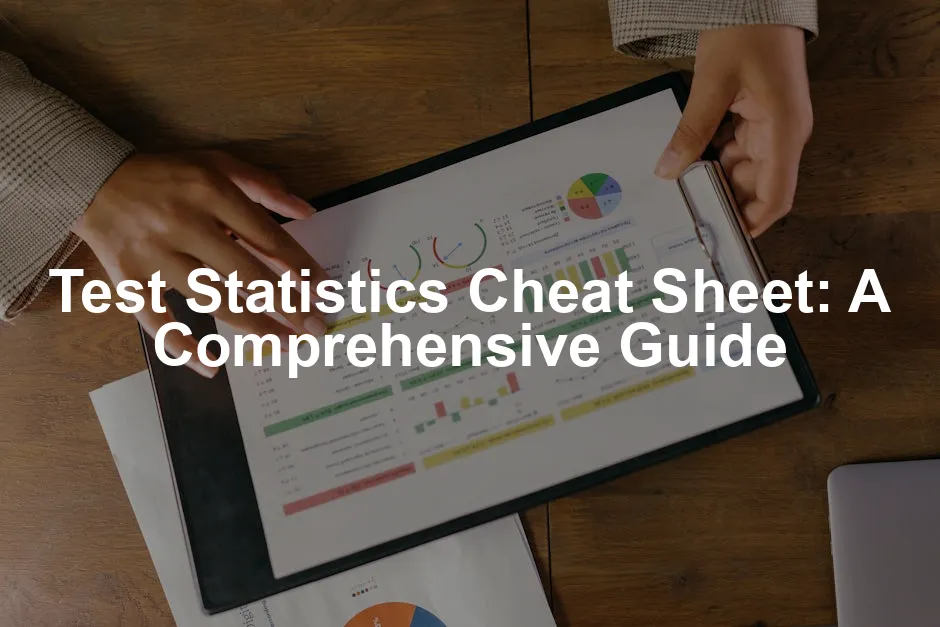Introduction
Statistics is the backbone of data analysis and decision-making. Imagine tackling a mountain of data without a map. That’s like wandering in a statistics jungle without knowing how to analyze your findings! Statistics helps us collect, organize, analyze, and interpret data. It reveals patterns, trends, and relationships in our world.
This cheat sheet aims to simplify your statistical journey. It’s packed with essential formulas, concepts, and practical applications tailored for students and professionals. Whether you’re crunching numbers in data science, unraveling human behavior in psychology, or ensuring safety in engineering, this guide has you covered.
In this article, we’ll cover various statistical tests, such as t-tests, ANOVA, and chi-square tests. These tests are not just academic jargon; they play crucial roles in diverse fields. So, whether you’re analyzing customer behavior or determining the effectiveness of a new product, understanding these tests is vital. Let’s dive into this treasure trove of statistical wisdom!

Basics of Statistics
What is Statistics?
Statistics is a branch of mathematics focused on gathering, analyzing, interpreting, and presenting data. It plays a critical role in research and data analysis. From predicting market trends to gauging public opinion, statistics helps us make informed decisions. If you’re just starting out, consider picking up a copy of Statistics for Dummies. It’s a great introduction without the heavy jargon!
There are two main types of statistics:
- Descriptive Statistics: This type organizes and summarizes data. Think of it as a great storyteller that simplifies complex tales into digestible bits. For more insights, check out descriptive statistics in manufacturing plant.
- Inferential Statistics: This type uses a sample to make predictions about a larger population. It’s like a detective that draws conclusions based on evidence. To understand the challenges, read about the problem with inferential statistics.

Types of Data
Data is the heart of statistics, and it comes in two flavors:
- Qualitative Data: This type describes characteristics. For example, colors, names, or labels fall into this category. Imagine describing your favorite ice cream flavor—delicious but non-numeric!
- Quantitative Data: This type involves numbers and measurements. Think of it as the data that lets you count or measure things, like the number of ice creams you’ve eaten this month.
Quantitative data can further split into:
- Discrete Data: This consists of countable values. For example, the number of pets you own.
- Continuous Data: This type includes measurable values that can take any number within a range. Think of your height or weight.

Key Terminology
Understanding statistics means mastering some key terms:
- Population: The entire group of interest. To learn more about this concept, you can read about population of interest statistics.
- Sample: A subset of the population used for analysis. Discover more about sampling in a sample statistic will not change from sample to sample.
- Variable: A characteristic or attribute that can vary across individuals or observations.
Familiarizing yourself with these concepts lays a strong foundation for tackling more complex statistical challenges. So, gear up and get ready to crunch some numbers!

Measures of Central Tendency
Mean
The mean is the average of a dataset. It’s calculated by summing all values and dividing by the count of those values. This formula captures the essence of central tendency beautifully:
Mean (μ) = ∑x / N
where ∑x is the sum of all data points and N is the total number of points.
Example Calculation:
Imagine you have the ages of five friends: 22, 24, 26, 28, and 30. To find the mean age, you add them up:
22 + 24 + 26 + 28 + 30 = 130
Now, divide by the number of friends (5):
Mean age = 130 / 5 = 26
So, the mean age is 26 years. Simple, right?

Median
The median is the middle value in a sorted dataset. It’s particularly helpful in datasets with outliers. To compute the median, follow these steps:
- Odd Number of Values: If your dataset has an odd number of values, the median is the middle number.
- Even Number of Values: If there’s an even number of values, the median is the average of the two middle numbers. For an example related to this, check out statistics poland median salary 2024.
Example:
For the dataset {10, 20, 30, 40, 50}, the median is 30.
In a dataset like {10, 20, 30, 40}, the median is:
Median = (20 + 30) / 2 = 25

Mode
The mode represents the most frequently occurring value in a dataset. A dataset may have one mode, more than one mode, or no mode at all. For a deeper understanding, refer to statsmodels residuals statistics.
Example:
In the scores {85, 90, 90, 95, 100}, the mode is 90 because it appears most frequently. In the dataset {1, 2, 2, 3, 3}, both 2 and 3 are modes—this is known as bimodal. If no number repeats, like in {1, 2, 3}, there’s no mode.

Comparison of Measures
Each measure of central tendency has unique strengths and weaknesses.
- Mean: Sensitive to outliers. It can be skewed by extreme values. Use it when data is normally distributed and there are no outliers.
- Median: Robust against outliers. It’s the go-to when data is skewed or has extreme values.
- Mode: Useful for categorical data and identifying the most common item. It can indicate trends in data (like popular products).
In summary, the mean provides a general average, the median offers a middle ground, and the mode highlights the most frequent data points. Choose wisely based on your data’s nature!

Measures of Dispersion
Range
The range measures how spread out the values in a dataset are. It’s simply the difference between the highest and lowest values. For example, you can explore orange county ca crime statistics to see how range applies in real-world scenarios.
Range (R) = Maximum Value – Minimum Value
Example Calculation:
In the dataset {5, 10, 15, 20}, the range is:
R = 20 – 5 = 15
This tells us the spread of the data.

Variance and Standard Deviation
Variance quantifies how far each number in the set is from the mean. It’s calculated using this formula:
σ² = ∑(x – μ)² / n
where μ is the mean, and n is the number of observations.
Standard Deviation is simply the square root of variance:
σ = √σ²
Example Calculation:
For the dataset {4, 8, 6, 5}, the mean is 5.75. The variance calculation follows:
- Find the squared differences from the mean:
- (4 – 5.75)² = 3.0625
- (8 – 5.75)² = 5.0625
- (6 – 5.75)² = 0.0625
- (5 – 5.75)² = 0.5625
- Sum these squared differences: 3.0625 + 5.0625 + 0.0625 + 0.5625 = 8.75
- Divide by the number of data points (4): Variance = 8.75 / 4 = 2.1875
Then square root it for standard deviation:
Standard Deviation = √2.1875 ≈ 1.48

Interquartile Range (IQR)
The IQR measures the middle 50% of a dataset. It’s calculated as:
IQR = Q₃ – Q₁
where Q₁ is the first quartile (25th percentile) and Q₃ is the third quartile (75th percentile).
Significance in Identifying Outliers:
Values that fall below Q₁ – 1.5 × IQR or above Q₃ + 1.5 × IQR are considered outliers. This makes IQR a robust measure against extreme values.
In conclusion, measures of dispersion provide crucial context to central tendency, revealing the spread and consistency of your data. Use them together to gain a complete picture!

Probability Theory
Basic Concepts
Probability theory is the heart and soul of statistics. It helps us understand uncertainty and make predictions. Let’s kick things off with some essential definitions that even your cat would find easy to grasp.
- Sample Space: This is the set of all possible outcomes of an experiment. Picture it like a buffet—everything you could possibly choose to munch on.
- Events: An event is a subset of the sample space. It’s like picking a specific dish from that buffet. For example, if your sample space is {1, 2, 3, 4, 5}, an event could be {2, 4}.
- Probability: This is a measure of the likelihood that an event will occur. It’s like the chances of your favorite dish being available at the buffet. Probability is expressed as a number between 0 and 1. A probability of 0 means the event won’t happen, while 1 means it definitely will!

Probability Formulas
Now that we have the basics down, let’s tackle some key probability formulas. Ready? Here we go!
- Joint Probability: This is the probability of two events happening at the same time. If A and B are two events, the formula is:
P(A and B) = P(A) × P(B)
- Conditional Probability: This is the probability of an event occurring given that another event has already occurred. The formula is:
P(A | B) = P(A and B) / P(B)
- Bayes’ Theorem: This theorem allows us to update our probability estimates based on new evidence. The formula is:
P(A|B) = P(B|A) × P(A) / P(B)

Practical Examples
Let’s bring these concepts to life with real-world examples!
- Joint Probability: If the probability of event A (rolling a 2) is P(A) = 1/6 and event B (flipping heads) is P(B) = 1/2, the joint probability of both happening is:
P(A and B) = 1/6 × 1/2 = 1/12
- Conditional Probability: If you have a bag with 3 red and 2 blue marbles, the probability of drawing a red marble after drawing a blue one is:
P(Red | Blue) = P(Red and Blue) / P(Blue) = 3/5 / 2/5 = 3/2
- Bayes’ Theorem: If the probability of having a cold given that you have a cough is 0.8, and the probability of having a cough is 0.6, then:
P(Cold|Cough) = 0.8 × P(Cold) / P(Cough)

Probability Distributions
Probability distributions help us visualize how probabilities are spread across values. Three common distributions are:
- Normal Distribution: Often referred to as the bell curve, it’s characterized by its mean and standard deviation. Most values cluster around the mean. Think of it as the average height of students in a school.
- Binomial Distribution: This applies to experiments with two possible outcomes, like flipping a coin. The formula for this distribution is:
P(X = k) = nCk × p^k × (1-p)^(n-k)
- Poisson Distribution: This distribution expresses the probability of a given number of events happening in a fixed interval of time or space. It’s perfect for describing rare events, like the number of earthquakes in a year!

Overview of Properties and Applications
Each distribution has unique properties and applications. The normal distribution is widely used in statistics, especially for inferential statistics. The binomial distribution helps model scenarios with success/failure outcomes—like voting in an election! The Poisson distribution is handy in fields like telecommunications and traffic flow analysis.
Understanding these distributions is essential for analyzing data and making predictions. So whether you’re predicting the next big trend or just trying to guess how many candies are in the jar, probability theory has got your back!
Hypothesis Testing
Null and Alternative Hypotheses
When we conduct hypothesis testing, we start with two competing statements:
- Null Hypothesis (H₀): This is a statement asserting no effect or no difference. It’s like saying the buffet has the same number of each dish.
- Alternative Hypothesis (H₁): This statement claims that there is an effect or a difference. For example, it could assert that one dish is more popular than another.
Let’s say we want to test if a new study method improves test scores. Here, H₀ might be that the study method has no effect, while H₁ suggests it does.

Types of Errors
In hypothesis testing, we can make errors. There are two main types:
- Type I Error: This occurs when we incorrectly reject the null hypothesis. It’s like declaring that a dish is a hit when it’s actually a flop!
- Type II Error: This happens when we fail to reject the null hypothesis when we should have. It’s akin to ignoring a fantastic dish simply because it didn’t look appealing.
Understanding these errors helps us interpret results more accurately and minimize mistakes in our conclusions.

P-Values and Significance Levels
The p-value is a crucial concept in hypothesis testing. It tells us the probability of observing our data, or something more extreme, assuming the null hypothesis is true. A low p-value (typically less than 0.05) suggests strong evidence against H₀.
The significance level (α) is the threshold we set to determine whether to reject H₀. If our p-value is less than α, we reject the null hypothesis. Think of it as the bouncer at a club—if your p-value is low enough, you get in!
For example, if we set α at 0.05 and calculate a p-value of 0.03, we reject H₀, concluding that our study method likely has an effect.
In summary, hypothesis testing allows us to make informed decisions based on data. By understanding the null and alternative hypotheses, types of errors, and how to interpret p-values, we can navigate the world of statistics like a pro!

Common Tests
Z-Test
The Z-test is your go-to for comparing means when sample sizes are large (typically over 30) and the population variance is known. It checks if there’s a significant difference between sample and population means.
Formula:
Z = (X̄ – μ) / (σ / √n)
Where:
X̄ is the sample mean.
μ is the population mean.
σ is the population standard deviation.
n is the sample size.
Example:
Imagine you’re a teacher who wants to know if your class’s average score differs from the national average of 75. If your class’s average score is 78, with a standard deviation of 10 and a sample size of 36, the Z-test will help you find out if this difference is statistically significant.

T-Test
The T-test is your trusty companion when the sample size is small (usually less than 30) or when the population variance is unknown. It compares the means of two groups to determine if they are significantly different.
- Types of T-Tests:
- One-Sample T-Test: Compares the sample mean to a known value.
- Independent T-Test: Compares means between two independent groups.
- Paired T-Test: Compares means from the same group at different times (e.g., before and after a treatment).
Formulas:
- One-Sample T-Test:
t = (X̄ – μ) / (s / √n) - Independent T-Test:
t = (X̄₁ – X̄₂) / √(s₁²/n₁ + s₂²/n₂) - Paired T-Test:
t = (D̄) / (sD / √n)
Where D̄ is the mean difference of paired observations.
Example:
If you want to evaluate whether a new study method improves student scores, you can use a paired T-test to compare scores before and after implementing the method.

ANOVA
ANOVA, or Analysis of Variance, tests the hypothesis that three or more group means are equal. It helps you understand if at least one group mean is different from the others.
When to Use ANOVA:
Use ANOVA when you have three or more groups to compare. It’s particularly useful in experiments where you want to assess the impact of a factor on a continuous outcome.
Example:
Suppose you’re studying the effects of three different diets on weight loss. By applying ANOVA, you can determine if the average weight loss differs significantly among the three diet groups.
In summary, Z-tests, T-tests, and ANOVA are essential tools for hypothesis testing in statistics. They help you make informed decisions based on your data, whether you’re comparing means or investigating the effects of different treatments. Each test has its unique application, so choose wisely!

Statistical Tests Overview
Decision Tree for Choosing Statistical Tests
To select the appropriate statistical test, consider this decision tree:
- Data Type: Is your data categorical or continuous?
- If categorical, consider Chi-square tests or Fisher’s Exact Test.
- If continuous, proceed to the next question.
- Number of Groups: Are you comparing one, two, or more groups?
- One group: Use a one-sample t-test or Z-test.
- Two groups: Use an independent t-test or paired t-test.
- More than two groups: Use ANOVA.
- Data Distribution: Is your data normally distributed?
- If yes, use parametric tests like t-tests or ANOVA.
- If no, consider non-parametric tests like Mann-Whitney U Test or Kruskal-Wallis Test.
This flowchart provides a quick guide to help you decide which statistical test to use based on your data characteristics.

Summary of Key Statistical Tests
Here’s a quick rundown of common statistical tests and when to use them:
- Chi-square Test: Used to assess relationships between categorical variables. For example, checking if gender is related to voting preference.
- Mann-Whitney U Test: A non-parametric test for comparing two independent groups when assumptions of the t-test are violated.
- A/B Testing: This method compares two versions of something to see which performs better. It’s often used in marketing campaigns to assess which ad drives more sales.
Each of these tests serves a unique purpose in data analysis. Understanding when and how to use them is crucial for drawing accurate conclusions from your data.

FAQs
What is a statistics cheat sheet?
A statistics cheat sheet is a concise reference guide. It summarizes essential formulas, concepts, and key terms in statistics. This handy resource helps users quickly find information without sifting through textbooks or lengthy notes.
Who can benefit from using a statistics cheat sheet?
Students, professionals, and researchers can all benefit from a statistics cheat sheet. Students often use it for exam preparation. Professionals may refer to it for data analysis tasks. Researchers find it valuable when designing experiments and interpreting results.
Are there specific cheat sheets for different fields?
Yes, there are tailored cheat sheets for various disciplines. Fields like data science, psychology, engineering, and health sciences each have specific statistical tests and methods. These specialized cheat sheets focus on the most relevant concepts for that field.
How can I use this cheat sheet effectively?
To use the cheat sheet effectively, refer to it while studying or working on data analysis. Familiarize yourself with key concepts and formulas. Use it as a quick reference when you encounter questions in your work or studies. The more you engage with it, the better you’ll remember the information!
Where can I find more resources on statistics?
Numerous resources are available for learning statistics. Online courses on platforms like Coursera and edX offer comprehensive learning experiences. Additionally, books such as “Statistics for Dummies” and “The Art of Statistics” provide great insights. Websites like Khan Academy and Stat Trek also offer helpful tutorials and explanations.
Please let us know what you think about our content by leaving a comment down below!
Thank you for reading till here 🙂
For a deeper dive into the world of statistics, consider grabbing The Art of Statistics: Learning from Data. This book will help you understand data with a pinch of humor and a lot of insight!
Thinking about data management? Check out The Data Warehouse Toolkit: The Definitive Guide to Dimensional Modeling. It’s essential for anyone serious about data architecture!
And if you’re looking to enhance your data analysis skills, grab Microsoft Excel 2021 for Dummies. Excel is a powerful tool for statistical analysis, and this book makes it user-friendly!
All images from Pexels




